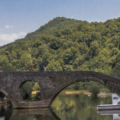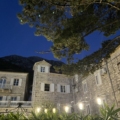Ostrog Monastery is a historical wonder that will leave you breathless. Thousands of pilgrims and visitors are enchanted by this treasure of Montenegrin spirituality, a natural and human-made miracle. This monastery complex commemorates Saint Vasilije and is one of Europe’s most popular Orthodox shrines. Many of you have almost probably heard of this sacred spot and the numerous miracles that have occurred there over the decades. So, let us begin with the origins of its peculiar moniker.
Historical overview
The name “Ostrog” comes from an older form of the Serbian word oštar/oštri, which means sharp. This is one of the forgotten adjectives that the old Slavs generally used to denote important geographical-historical and ecclesiastical-historical elevations of its existence.
Perched on a massive rock formation called “Ostroška greda,” the monastery sits an impressive 900 meters above sea level in the municipality of Danilovgrad. It’s just a short drive from the Montenegrin capital, Podgorica, and only 15 kilometers from the bustling city of Nikšić.
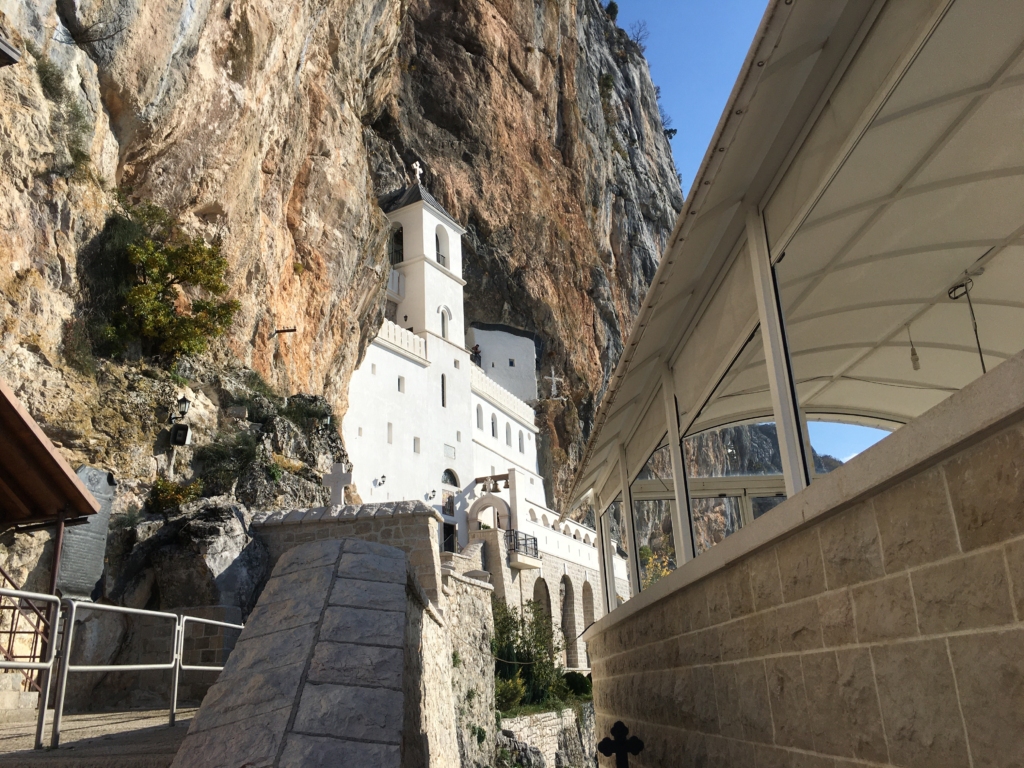
Visiting the Ostrog Monastery is truly a one-of-a-kind experience that you won’t soon forget. So why not pack your bags and come see this incredible site for yourself? You won’t be disappointed!
Bishop Vasilije (Basil) built the monastery in the 17th century. He came from Herzegovina while looking for a suitable place where he would lead his ascetic life. (However, according to some sources, the Monastery was built much earlier, around 859.)
In addition to wanting a calm spot to create a monastery, St. Vasilije was concerned about the Ottomans’ continuous attacks. He was expressly looking for an enclosed place that would be safe from these invasions. Eventually, he selected the ideal location and began building the monastery that would become his final resting place. After his death in 1671, St. Vasilije was canonized, and his remains were placed in the Upper Monastery at the Church of the Blessed Virgin Mary. Visitors can now pay their respects to this famous saint and enjoy the peaceful surroundings he meticulously selected.
Did you know that many pilgrims walk barefoot or crawl the final stretch to the monastery as a sign of devotion or in hope of healing?
The Complex of the Ostrog Monastery
The Monastery comprises several sections. The Upper Monastery, or Gornji Manastir, consists of two churches. The Church of the Presentation of the Blessed Virgin Mary and the church dedicated to the Holy Cross. This segment of the monastery is a true masterpiece of architecture, as it arises straight from the rock. To reach it, you need to climb a 3-kilometer-long narrow path. The Monastery’s inaccessibility was particularly important during history, as numerous historical and heroic events happened at this holy site.
Nine Bloody Days
The history of the Ostrog Monastery is filled with tales of bravery and heroism – like the infamous “Nine Bloody Days” campaign of 1853. During this time, the Ottoman Empire attempted to take over the Upper Monastery, but the Montenegrin duke Mirko Petrović and his seventeen comrades stood strong, defending the monastery for an incredible nine days against a much larger army.
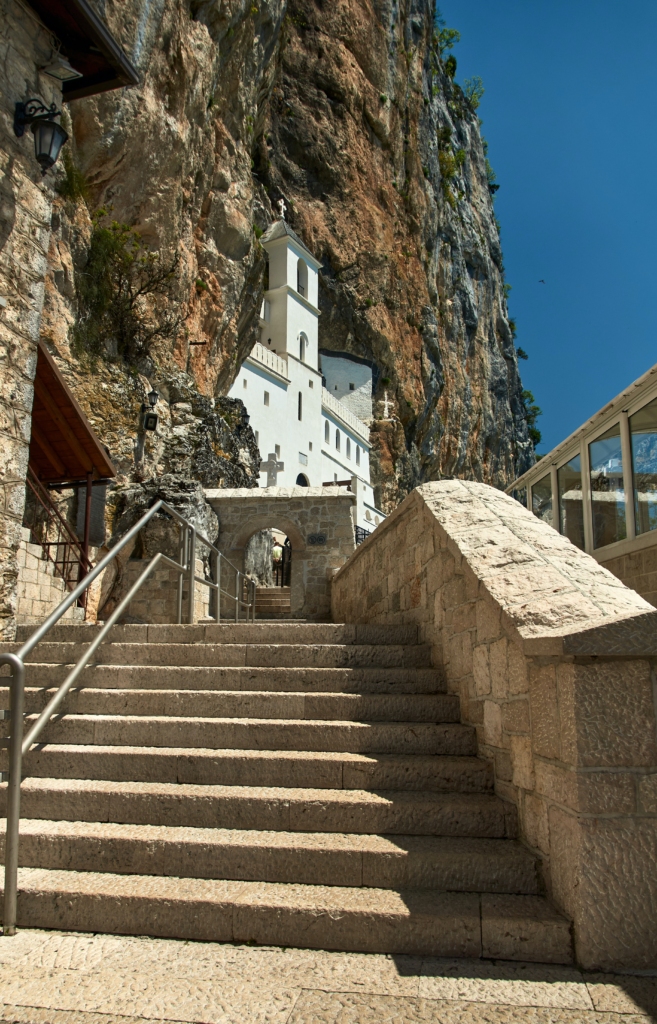
To keep the Monastery from falling into enemy hands, the ruler of Montenegro at the time ordered the evacuation of the Monastery and the burning of the bridge leading to it. Thanks to their heroic efforts, the soldiers managed to preserve most of the Monastery’s cultural and historical treasures, including the relics of St. Vasilije.
The Church of the Holy Trinity
The Church of the Holy Trinity constitutes the central part of the Lower Monastery or Donji Manastir. This church was the endowment of Archimandrite Josif Pavićević of Ostro in 1824. As for the cultural and historical value of the Lower Monastery, it also has a special role. In 1942, the patriots of Montenegro and Boka held an assembly here at the Monastery. They made some important decisions regarding the further struggle against the occupiers and the organization of a new national government.
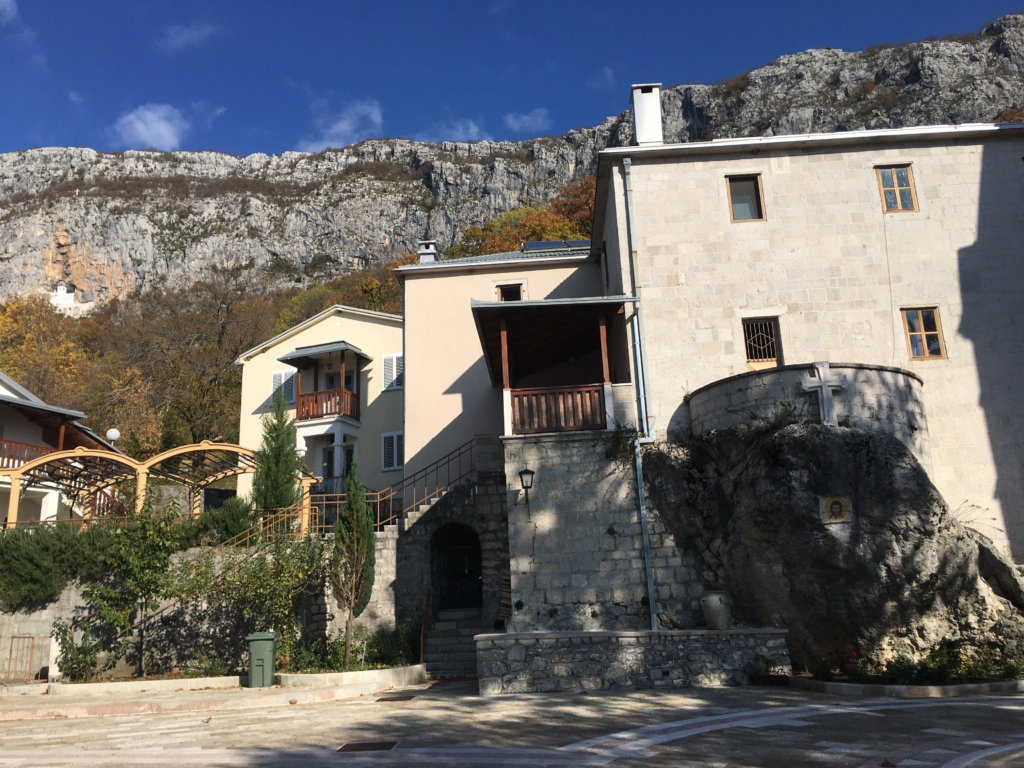
Interested in exploring the spiritual and historical tapestry of Montenegro? Don’t miss this comprehensive guide on the Top Ten Monasteries and Churches to Visit in Montenegro. From the gravity-defying Ostrog Monastery to the serene Savina Monastery overlooking the Bay of Kotor, this blog post is a treasure trove for anyone intrigued by the intersections of spirituality, culture, and architecture.
Did you know that during World War II, a bomb dropped directly toward the monastery failed to explode, further fueling its reputation as a protected and holy site?
Today’s look at Ostrog Monastery
Today’s look at the Monastery dates from the reconstruction period from 1923-1926. Before that, a fire ruined and burned most of the Monastery. However, two small cave churches stayed intact. Their walls embody breathtaking frescos of St. Vasilije’s life.
The most valuable preserved antiquities are the frescoes in the cave church of the Holy Cross at the top of the Upper Monastery and The Church of the Presentation of the Blessed Virgin Mary.
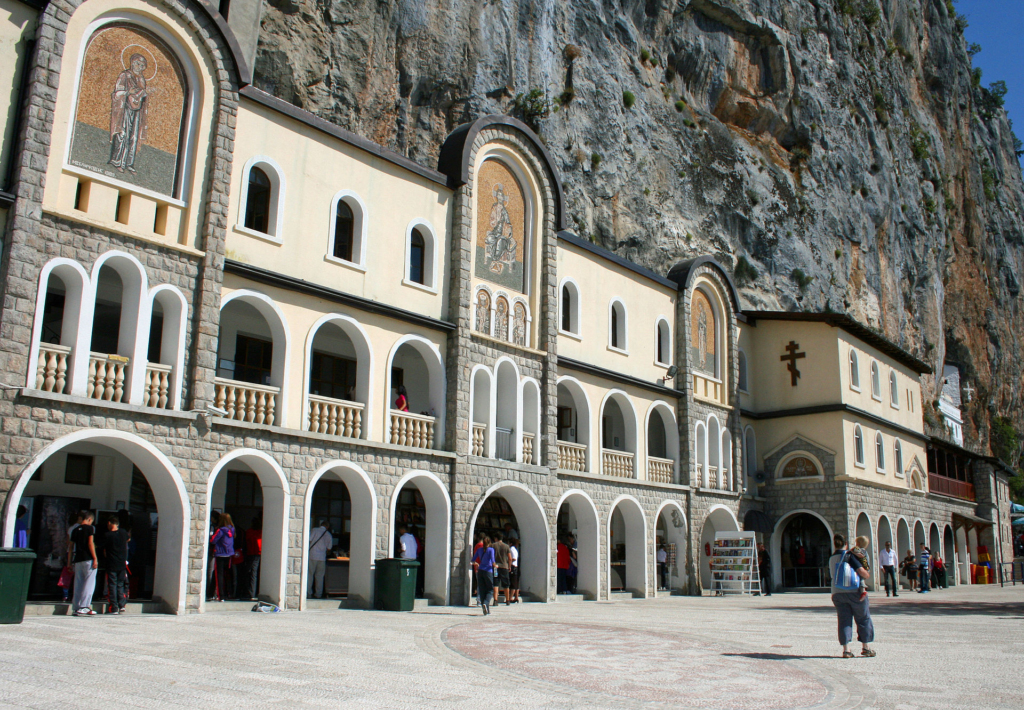
The Ostrog Monastery holds significant religious relics that draw believers from around the world. Inside the Upper Monastery, two cave-churches stand, one of which, the Holy Cross, boasts beautiful frescoes depicting revered saints, scenes from Christ’s life, and religious holidays. The reliquary of Saint Basil of Ostrog, the monastery’s founder, is enshrined in the Cave Church dedicated to the Presentation of the Mother of God to the Temple. In addition, the holy relics of the martyr boy Stanko, who was killed for his Christian faith, were initially kept in the Holy Cross church, but now rest in the newly built Church of Saint Stanko in the Lower Monastery.
Saint Vasilije – Ostrog’s Miracle Worker
St. Vasilije was believed to have miraculous power. Moreover, many stories circulated among the Montenegrins about his relics’ miracles and healing powers. Certainly, the most interesting story is about the experiences of US Senator William Bill Barr. His wife, an American psychiatrist of Montenegrin origin, wrote down the story of her husband’s pilgrimage to the Monastery Ostrog.
Did you know that Nikola Tesla’s parents once made a pilgrimage to Ostrog, and it’s said the experience left a strong impression on their faith and family life?
The Miracles of Saint Vasilije
In 1970, a senator survived an assassination attempt that left him in excruciating pain and missing one of his legs. His pain was causing him more problems than he could handle. But one night, he had an unusual dream that gave him hope.
In the dream, he climbed up to a high rock where he saw a small white church with an old man standing in front of it. The man had a long white beard and hair and spoke to him in an unknown language. The man led him through the church, healing sick people with his touch.
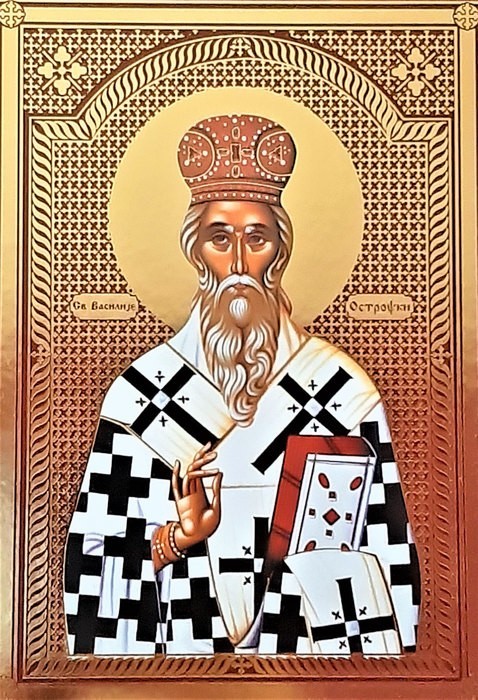
Imagine discovering a remedy for your pain in the most unexpected way possible; this is exactly what occurred to a US Senator. He stumbled found a photo of St. Vasilije of Ostrog’s icon and became interested in learning more about the saint and the monastery.
Story of the Senator who visited Ostrog
In 1980, the Senator traveled to Montenegro with a group of people who had also suffered amputations. His goal was to lead an ascetic life and learn to pray in Serbian. He spent his days at the Upper Monastery, praying daily and feeling a powerful force within him. He described his time there as something that can’t be put into words – it’s something you have to experience for yourself.
During his stay in Montenegro, something incredible happened – the Senator’s pain began to decrease until he was completely pain-free. He credits the healing power of St. Vasilije of Ostrog and the energy of the Upper Monastery for his incredible transformation.
It’s amazing to think about how a simple picture can lead to such a life-changing experience. So if you’re searching for healing and spiritual renewal, consider a visit to the Ostrog Monastery and see what kind of miracles might be waiting for you.
There are many other similar unbelievable stories about ill and injured people being cured or healed while visiting the Monastery and the holy relics of St. Vasilije.
Pilgrimage to the Ostrog Monastery
Every year, on the May 12th day of his repose, thousands of people worldwide visit this holy site. They all have the same goal: to pray to St. Vasilije for a much-needed miracle. The pilgrimage lasts a few kilometers from the Lower Monastery to the Upper Monastery. Finally, when the pilgrims reach the Upper Monastery, they usually sleep outside the night.
The name of St. Vasilije is pronounced with special respect and standing up. When mentioning the saint’s name, the person should cross himself, saying, “Glory to him and grace.”
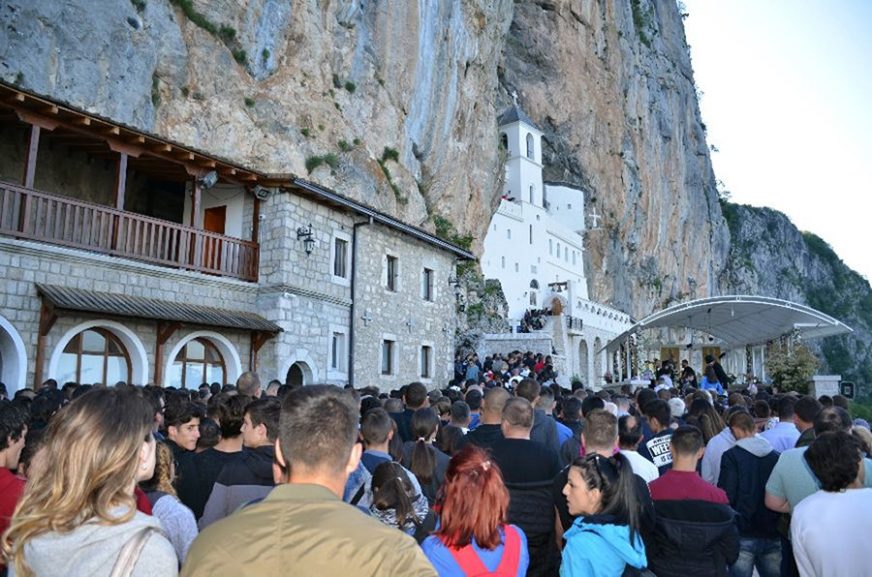
How to reach Ostrog Monastery
Ostrog Monastery itself is visited not only during major spiritual holidays. The monastery is open daily for visitors from 6 am to 5 pm from May to September and 5 am to 4 pm the rest of the year. Entry to the monastery is free – but a donation is advisable.
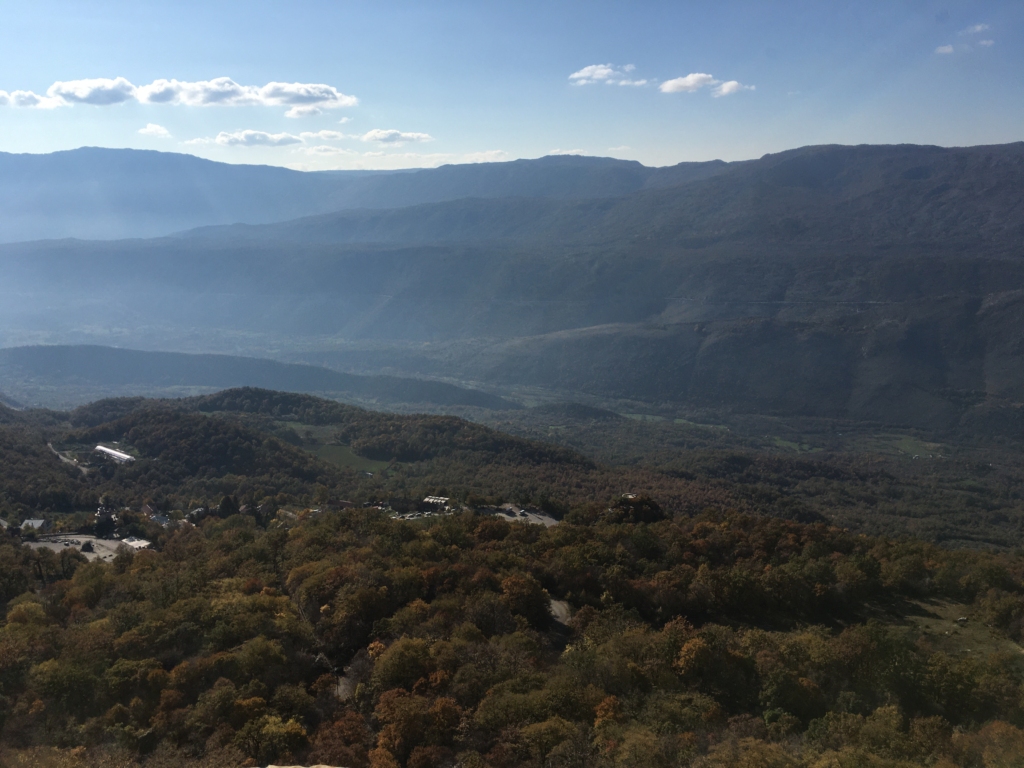
Plenty of beds on the monastery property are available to anyone who wants to spend the night in Ostrog – separated for me and women (it is a monastery after all!) at a very reasonable price. And if there are no free beds, you can spend the night in the central square of the Monastery.
There is no direct public transportation to Monastery Ostrog. With this in mind, you can take a taxi from Nikšić, Podgorica, or any other coastal town at a reasonable price of 20 -30 euros. Additionally, many agencies organize daily trips and excursions to the Monastery, so you can consider that option.
When traveling alone, there are two ways to get from Kotor to Ostrog Monastery. The first is around the Bay of Kotor via Risan, then uphill to the road from Trebinje to Nikšić. Another way is traveling from Kotor to Lovćen, then driving via Njegošev vrh and Danilovgrad to Ostrog.
Getting to the monastery from Podgorica is relatively easy, just taking the main road leading to Nikšić. Or alternatively, you can take a tour to the monastery from Podgorica and also see the wonderful Niagara Waterfall.
Accommodation
Unfortunately, there aren’t an abundance of hotels near the Monastery – However, we can wholeheartedly recommend Hotel Sokoline.
Hotel Sokoline offers incredible room views, friendly and helpful staff, clean and tidy rooms, ample parking, and reasonably priced and tasty food. Breakfast is great with a breathtaking view. The hotel’s proximity to Manastir Ostrog is a bonus. The spacious and luxurious rooms provide an amazing view of the mountains and valley. Highly recommended for its value and memorable stay.
Our visit to Ostrog Monastery
The prospect of a 40-minute taxi ride didn’t fill me with delight. Quite the opposite. I was dreading it. Nearly three-quarters of an hour, bumbling my way through a conversation in a language that I have only the most rudimentary grasp on? Actually, double that, there was going to be a journey back as well, unless I decided to throw it all in with Ostrog in the hope of eventual salvation. That may have been necessary, but it was unlikely.
Travelling to Ostrog
The taxi arrived and sped away, leaving Nikšić behind in search of cliffside deliverance and the sweeping breathlessness of Montenegrin Herzegovina. This is the eastern portion of that land, ceded to Montenegro after the Congress of Berlin, that famous humiliation of the Ottoman Empire, a power exercise that tiptoed an increasingly moth-eaten tightrope between war and peace. It chopped off pieces here and stuck them there, using little more than sellotape, gum and the misguided belief that divine rule was reality. Big men around a big table, making big decisions before devouring big portions of debauchery. To the everyday people of what became Old Herzegovina, the change was as perceptible as the spinning of a web on the arm of a chair. A nibble from a moth, so to speak.
The conversation with the taxi driver was refreshingly simple. His name was Marko, he was Nikšić born and bred, and ferrying visitors to Ostrog was par for the course. He enjoyed my mangled attempts at conversation and humoured me in a fatherly fashion, asking simple questions and giving simple answers. Marko excitedly talked about Ostrog and its power, speaking so enthusiastically that his glasses continually slipped to the bridge of his nose, receiving a terse poke for their troubles, returning them to their rightful spot. Marko stared straight ahead at all times, which is a remarkably rare characteristic for a Balkan taxi driver.
The drive took 37 minutes, a length of time that would have been shorter had we not spent a portion of it stuck behind the tentative manoeuvres of a car bearing Austrian plates, HL for Hollabrunn, numbers redacted. Marko told me he would wait in the car as I enjoyed Ostrog. I asked him how long he wanted to wait; he said as long as it takes.
Seeing Ostrog
Ostrog is an incredible achievement. Established in the 17th century, it is a monastery of the Serbian Orthodox Church that has the enviable status of being carved into the side of a vertical cliff, a stunning example of man’s arrogant ambition coming good. ‘Because we can’ as a motivator. Rebecca West, in her endless attempt to be above everything, referred to it as a ‘bleak pigeonhole in a Montenegrin cliff’, yet another misstep in nearly 1150 pages of the things, assassination of Franz aside.
A bleak pigeonhole in a Montenegrin cliff, my lord, what a preposterous way to describe one of the region’s great triumphs. Building something like Ostrog in the 21st century would be an achievement, but doing so in the 17th? Come on now, there were no trucks to transport materials to this most treasured spot. God’s trucks had to do the work, which was most likely donkeys and men, the planet’s most fallible but dedicated beasts. Stone after stone, to the face of the cliff. A lonely job, with only the promise of potential salvation for company. A thankless job, unless the knowledge of servitude is thanks enough.
Entering the Monastery
It was tremendously quiet, almost a contradiction but not quite. I stood in the courtyard of the monastery, a bustling square that simultaneously managed to produce not a sound, outside of the distant hum of prayer. There was no shortage of movement but an almost complete lack of volume. The November sky had taken on a shade of blue that complemented the scene, the copper cliff accentuating the scorching white of the monastery itself. The view out to the valley was comprehensive but featureless, an apt visage for a location devised with peace in mind.
None of it had anything to do with me. This wasn’t a new sensation in the face of faith, to the point where lamenting the state of affairs once more felt superfluous, but the monumentality of Ostrog deserved its own evaluation. I was amazed by the image in front of me, stunned by the dedication and ability that allowed it to exist. I stared lovingly at the monastery, safe in the knowledge that this was one of the most incredible things I was going to come across, yet my heart stirred not a jot. This achievement was not mine, outside of a lost community based around our existence as meat, sinew and bone. I could appreciate every facet of Ostrog’s existence without letting it into my being. I looked at it with respect, not love.
First impressions
I stepped into the monastery, climbing the worn stairs as my gaze lingered on the chipped walls. Somber eyes stared back at me from faded frescoes, their colors still vivid despite the centuries and the violence they had endured. I wandered through chapels and chambers, each revealing a beauty greater than the one before. However, all unsuccessful in stirring me from my ideological slumber. The concept of beauty being imbued with meaning has plenty of shades, and the meaning in question is just as important to the beholder as the image. Beauty isn’t quite in the eye of the beholder, but that is part of the battle.
Personal reflection
In this case, the beholder was a stunted, lonely man, emotionally surrounded by everything one could want yet endlessly moving in search of a silence that only loneliness can provide. Because loneliness means freedom, loneliness means a life without the responsibilities that drag men and women down. It is without the burdens of existence that take up the valuable minutes, hours and seconds of our days. It also means taking all of the blame, all of the time, and not having to answer for it. Loneliness is what waits at the end of the tunnel.
More importantly, loneliness is freedom when it comes to the hearts and minds of other people. Life is terrifying difficult, impossible at times, and the awareness that good people far and wide struggle on a day-to-day basis was the single most crippling piece of knowledge that my brain had ingested to this point. Travelling alone didn’t remove that feeling, but it dulled the intensity of it. My friends, magnificent people one and all, all with their own hardships. Illness, physical and mental, personal and familial. Stress, worry, heartbreak, fear, anxiety, depression, suicide, death. Nobody should have to experience any of those, but everyone experiences at least one. Life is cruel, and the desperation of loneliness is one of the few options one has.
But it isn’t, because all that does is magnify the knowledge and limit the usefulness. I can tie myself in knots worrying about the mental health of friends, partners, family members and the rest, but those hours are lessened by five minutes of making a difference. The problem is that that isn’t always clear, and seldom is it so in the moment.
Leaving Ostrog
I left Ostrog. The achievements of donkeys and men had stirred only disquietude, a damning indictment of the path that my mind had chosen to take when it comes to the interpretation of existence. The taxi driver had fallen asleep.
If you want to read more about John Bills trips around Montenegro, you can read “Donkeys and Men: Travels in Montenegro” available on Amazon
Should I visit Ostrog Monastery?

Yes, the Ostrog Monastery is a must-see for everyone visiting to Montenegro. Its stunning setting and rich history make for an amazing experience. Visitors can see the Upper and Lower Monasteries’ breathtaking architecture, examine the lovely murals, and feel the healing power of St. Vasilije’s relics. The trek to the monastery is a deeply spiritual and transformational experience.
With free admission and abundance of reasonable lodging, there’s no excuse not to visit the Ostrog Monastery. So pack your bags, visit Montenegro, and experience the beauty and spirituality of the Ostrog Monastery for yourself!




